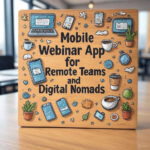There is more generational difference than ever in the workplace today, where things change quickly. Companies now have to deal with a complicated situation: Baby Boomers are getting close to retirement, Millennials are in charge, and the Z group is starting to work and has new expectations. This merger gives leaders trying to build cohesive, productive teams a unique chance, but it also comes with big challenges. To be a good generational leader, you need to be able to understand, change, and communicate strategically.
Understanding the Generational Divide
There are different values, ways of communicating, and expectations at work for each age:
- Baby Boomers (born 1946–1964) often value loyalty, structure, and face-to-face communication. Many have decades of institutional knowledge and experience.
- Millennials (born 1981–1996) are known for their adaptability, tech fluency, and desire for purposeful work and feedback.
- The Z generation (born after 1996) grew up with smartphones and social media. They value flexibility, inclusivity, mental health support, and digital-first communication.
To lead across these differences, leaders must go beyond age-based stereotypes and focus on individual strengths while fostering intergenerational respect.
Strategy 1: Foster Cross-Generational Collaboration
Encouraging teams to work together across age groups can lead to stronger outcomes and innovation. Boomers can mentor younger employees by sharing their expertise and industry insights. In return, Gen Z and Millennials can offer digital solutions and cultural relevance. Leaders can facilitate this exchange by creating formal mentoring programs or collaborative projects that intentionally mix generations.
Strategy 2: Tailor Communication Styles
There’s no one-size-fits-all approach when it comes to communication. Boomers might prefer emails or in-person meetings, Millennials often opt for quick messages via tools like Slack, and the Z generation leans heavily on instant communication—texts, DMs, or short videos.
Good leadership involves meeting people where they are. Offering multiple communication channels and encouraging clarity, empathy, and feedback across all formats can ensure everyone stays engaged and aligned.
Strategy 3: Embrace Flexibility and Hybrid Structures
Workplace flexibility is a non-negotiable for younger generations. Millennials helped usher in the remote work era, and Gen Z now expects flexible hours and hybrid work environments. Boomers, having spent most of their careers in traditional office settings, may need time and support to adjust to this new normal.
Successful leaders create flexible environments that balance remote productivity with face-to-face interactions. This might involve core collaboration hours, optional in-person days, or investing in the right digital tools to ensure smooth operations.
Strategy 4: Lead with Purpose and Inclusivity
Modern employees—especially Millennials and the Z generation—want more than just a paycheck. They seek meaning in their work and alignment with company values. Transparent leadership, a commitment to sustainability, and authentic DEI (Diversity, Equity, Inclusion) initiatives are essential.
Companies that make their mission clear and include employees of all ages in shaping that mission will see better engagement and retention. Inclusivity also means recognizing that each generation has different needs when it comes to benefits, work-life balance, and career progression.
Strategy 5: Personalize Motivation and Recognition
Boomers may value recognition tied to tenure and loyalty. Millennials often seek development opportunities and public acknowledgment, while the Z generation prefers fast feedback and personal growth paths.
Effective leaders identify what motivates each individual and customize recognition accordingly. From handwritten thank-you notes to digital shout-outs or growth plans, personalization matters more than ever.
Conclusion
The future of work isn’t about choosing one generation’s way over another—it’s about blending the best of each. When leaders embrace generational diversity as a strength and actively work to bridge differences, they create a workplace that is not only inclusive but also resilient and innovative. With empathy, flexibility, and open communication, uniting Boomers, Millennials, and the Z generation is not only possible—it’s powerful.




